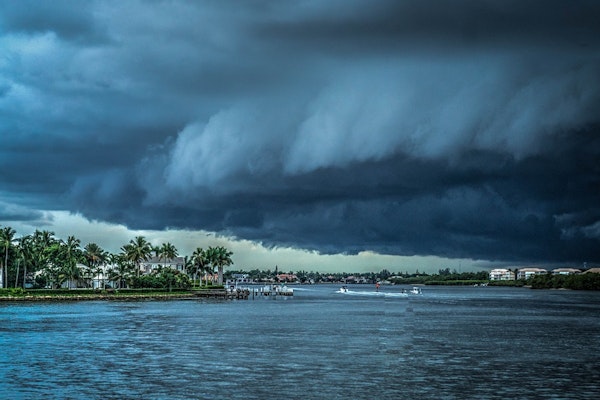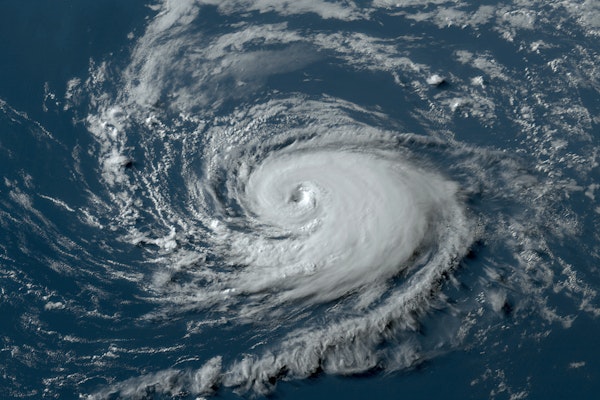
AI’s Impact on Insurance Pricing: New Strategies for Risk and Profitability
Artificial intelligence is revolutionizing insurance pricing by enhancing risk assessment, personalizing premiums, and improving operational efficiency, though significant challenges remain in infrastructure, data quality, and compliance.
September 30, 2024
Auto
Insurance Industry
Risk Management
Technology

Hurricane Helene Set to Hit Florida Tonight with Life-Threatening Storm Surge and 40 Million Under Warnings
Hurricane Helene, a rapidly intensifying Category 2 storm, is expected to make landfall as a Category 4 hurricane in Florida, bringing 15-20 foot storm surges and affecting millions across the Gulf Coast.
September 26, 2024
Catastrophe
Legislation & Regulation
Property
Risk Management
Alabama
Florida
Georgia

Florida’s Insurance Market Faces Uncertainty as Hurricane Helene Approaches
As Hurricane Helene threatens Florida’s Gulf Coast, concerns rise over the stability of the state’s recovering insurance market. Despite progress, losses could still reach billions.
September 26, 2024
Catastrophe
Legislation & Regulation
Property
Risk Management
Florida

Hurricane Helene Targets Florida with Powerful Storm Surge and Inland Flooding Threats
Hurricane Helene is intensifying as it heads toward Florida’s Gulf Coast, threatening life-threatening storm surges, widespread flooding, and strong winds that will reach far inland across the Southeast.
September 25, 2024
Catastrophe
Litigation
Property
Risk Management
Alabama
Florida
Georgia
Kentucky
North Carolina

Why Hurricane Helene Could Be One of the Most Dangerous Storms in Years
Hurricane Helene is forecast to intensify rapidly as it nears Florida, with major impacts expected across the Southeast, including extreme winds, flooding, and widespread storm surge.
September 25, 2024
Catastrophe
Litigation
Property
Risk Management
Florida
Georgia
North Carolina
South Carolina

California Wildfire Season Intensifies Without Key Factor, Raising Concerns for the Coming Months
California has faced a severe wildfire season fueled by heat and dried-out vegetation, even without the seasonal winds that typically escalate fire risks. Experts warn that conditions could worsen as fall progresses.
September 24, 2024
Catastrophe
Legislation & Regulation
Property
Risk Management
California

CEOs Sharpen Focus on Cybersecurity and Generative AI Amid Volatility
The 2024 KPMG CEO Outlook highlights how business leaders are tackling cybersecurity risks, generative AI implementation, and mergers and acquisitions to stay ahead in an era of compound volatility.
September 24, 2024
Risk Management
Technology

Generative AI’s Expanding Role in Insurance: Beyond Efficiency to Product Innovation
Generative AI is moving beyond enhancing efficiency for insurance professionals. It now holds potential for transforming risk management, customer interaction, and even product offerings.
September 24, 2024
Auto
Insurance Industry
Risk Management
Technology

Actuarial Studies Tackle Bias, AI, and Modeling in Insurance Pricing
The Casualty Actuarial Society has released four new reports that explore bias in insurance pricing models, AI usage, and regulatory concerns, aiming to guide actuaries toward fairness and compliance.
September 24, 2024
Auto
Legislation & Regulation
Risk Management
Technology

Hurricane Threat Looms for Gulf Coast as Atlantic Storm Intensifies
A developing Atlantic storm poses a significant hurricane risk to the US Gulf Coast, stretching from Mississippi to Florida. Forecasters predict rapid intensification as it moves north through warm Gulf waters, threatening major landfall.
September 23, 2024
Catastrophe
Litigation
Property
Risk Management
Florida
Mississippi

Evolving Worker Activity Tools Now Powering AI Data Generation in the Insurance Industry
COVID-era worker activity monitoring tools have evolved into sophisticated AI data generators, helping insurers tackle rising repair costs, litigation, and labor shortages while improving operational efficiency.
September 23, 2024
Auto
Litigation
Risk Management
Technology

Workers’ Compensation Outpaces P&C Lines with Sustained Profitability and Low Claims Frequency
Workers’ compensation continues to boost the property and casualty insurance industry with an 88.7 combined ratio in 2023, driven by reduced claims frequency, workplace safety, and competitive market conditions.
September 23, 2024
Insurance Industry
Legislation & Regulation
Risk Management
Workers' Compensation

Climate Change Drives Global Surge in Fires, Floods, and Drought
The impact of climate change is becoming more visible worldwide, with intensifying wildfires, severe droughts, and devastating floods affecting regions from Brazil to Southeast Asia.
September 19, 2024
Catastrophe
Litigation
Property
Risk Management
California
North Carolina

Ohio’s Strategy to Attract and Train Insurance Talent
Ohio’s successful collaboration between universities, insurance companies, and stakeholders offers an effective model for recruiting and educating new talent in the insurance and risk management fields.
September 19, 2024
Education & Training
Insurance Industry
Risk Management
Technology
Ohio

NFL Teams Losing Millions in Cap Space by Skipping Insurance on Star Quarterbacks
The Aaron Rodgers injury and Jets’ decision to skip insurance on his contract highlight how NFL teams can lose significant cap space and insurance proceeds when failing to protect high-value players.
September 18, 2024
Insurance Industry
Legislation & Regulation
Litigation
Risk Management
California
Florida
New York
Ohio
Pennsylvania





